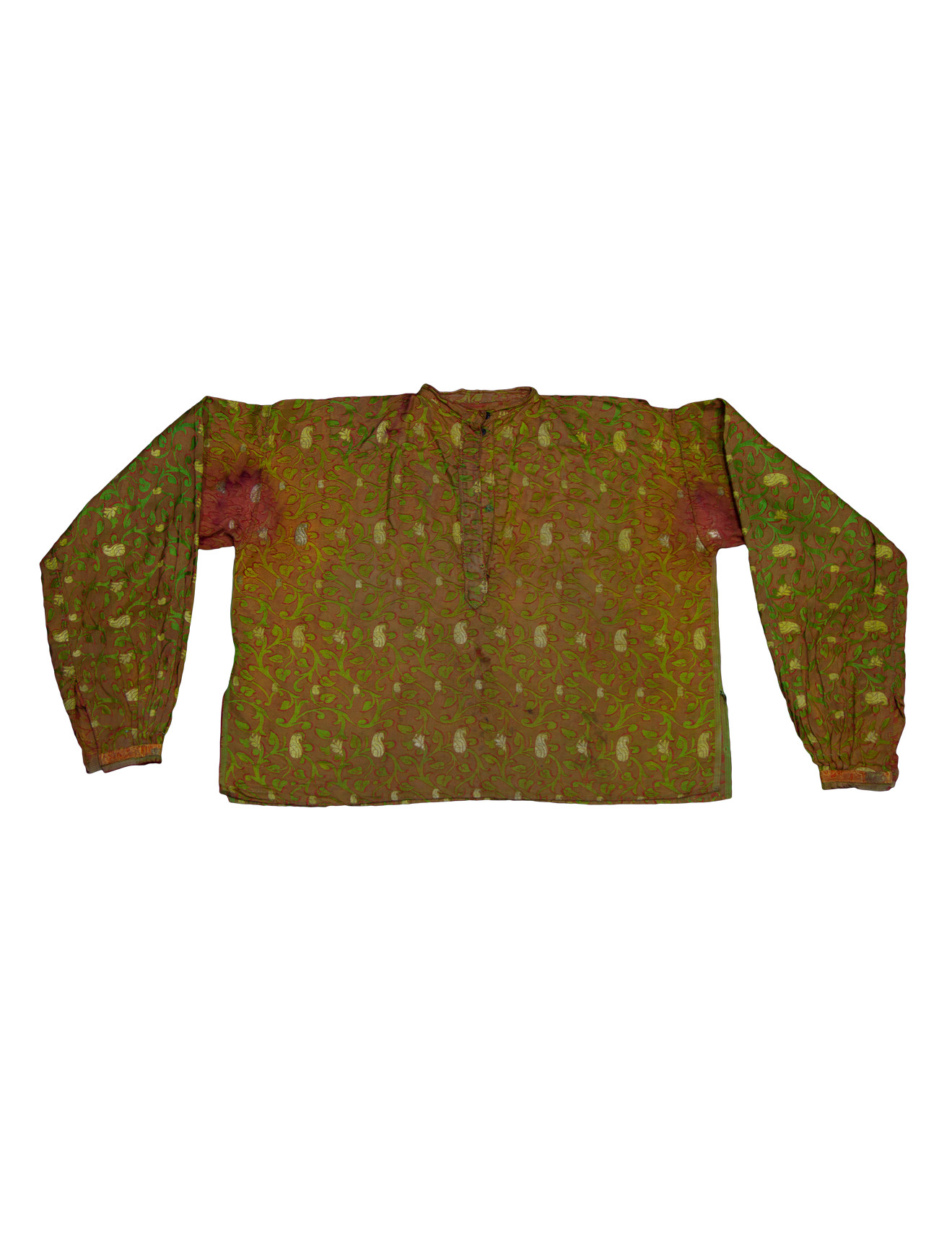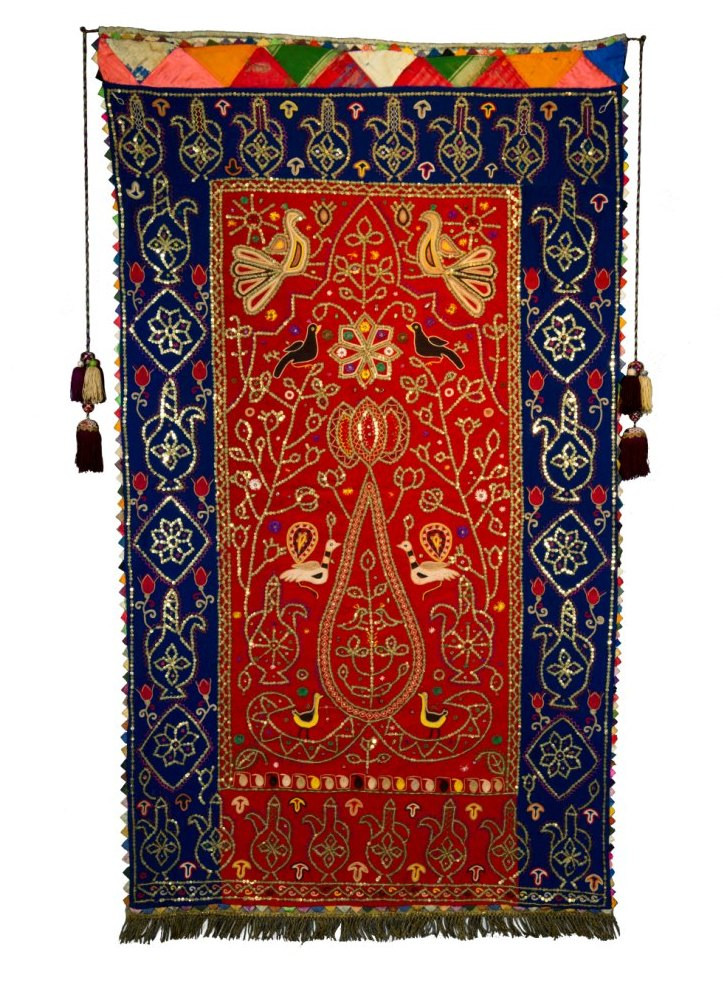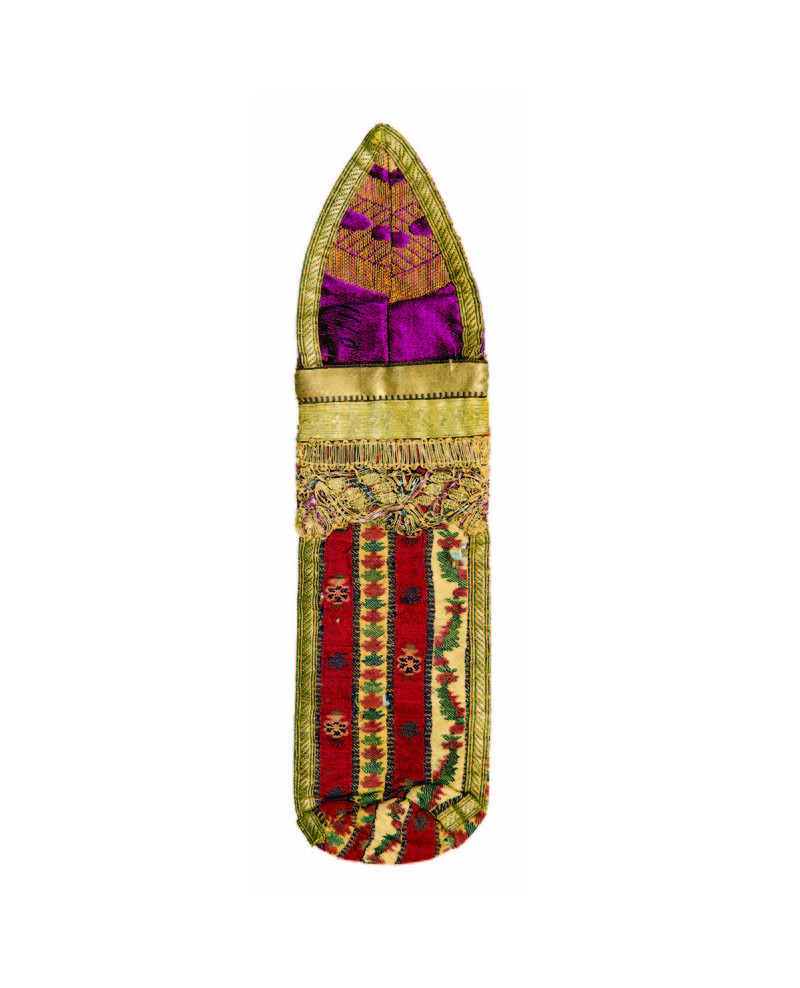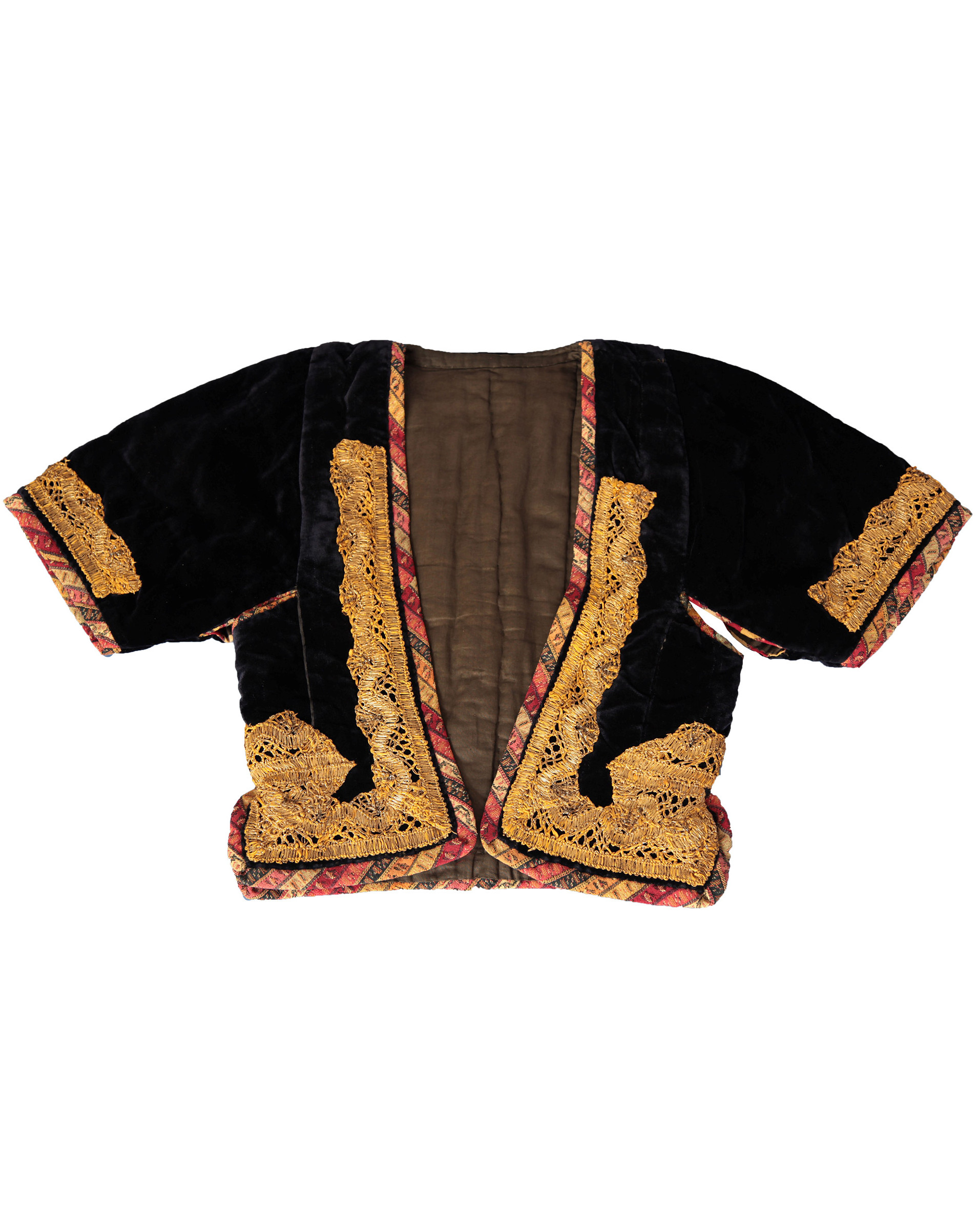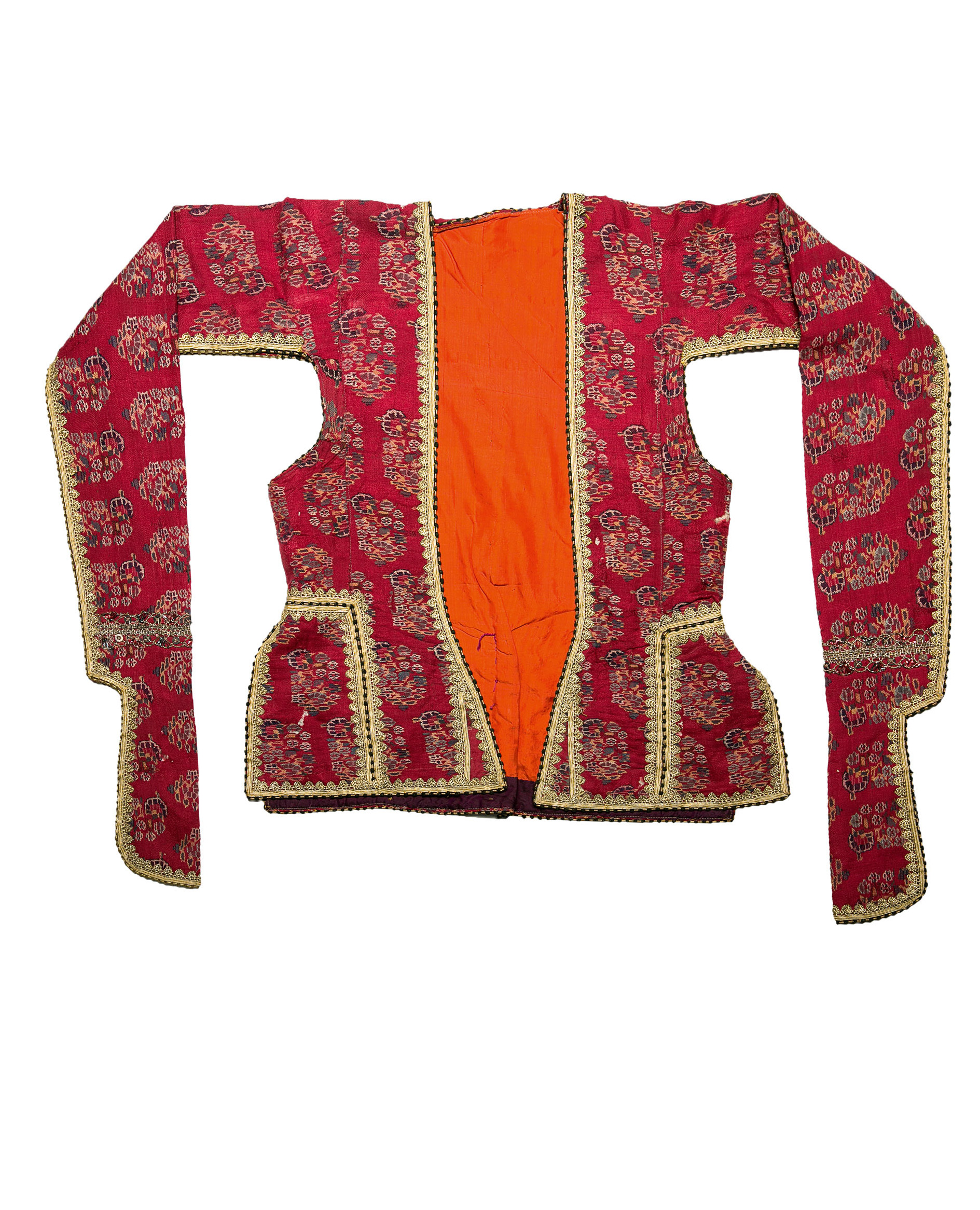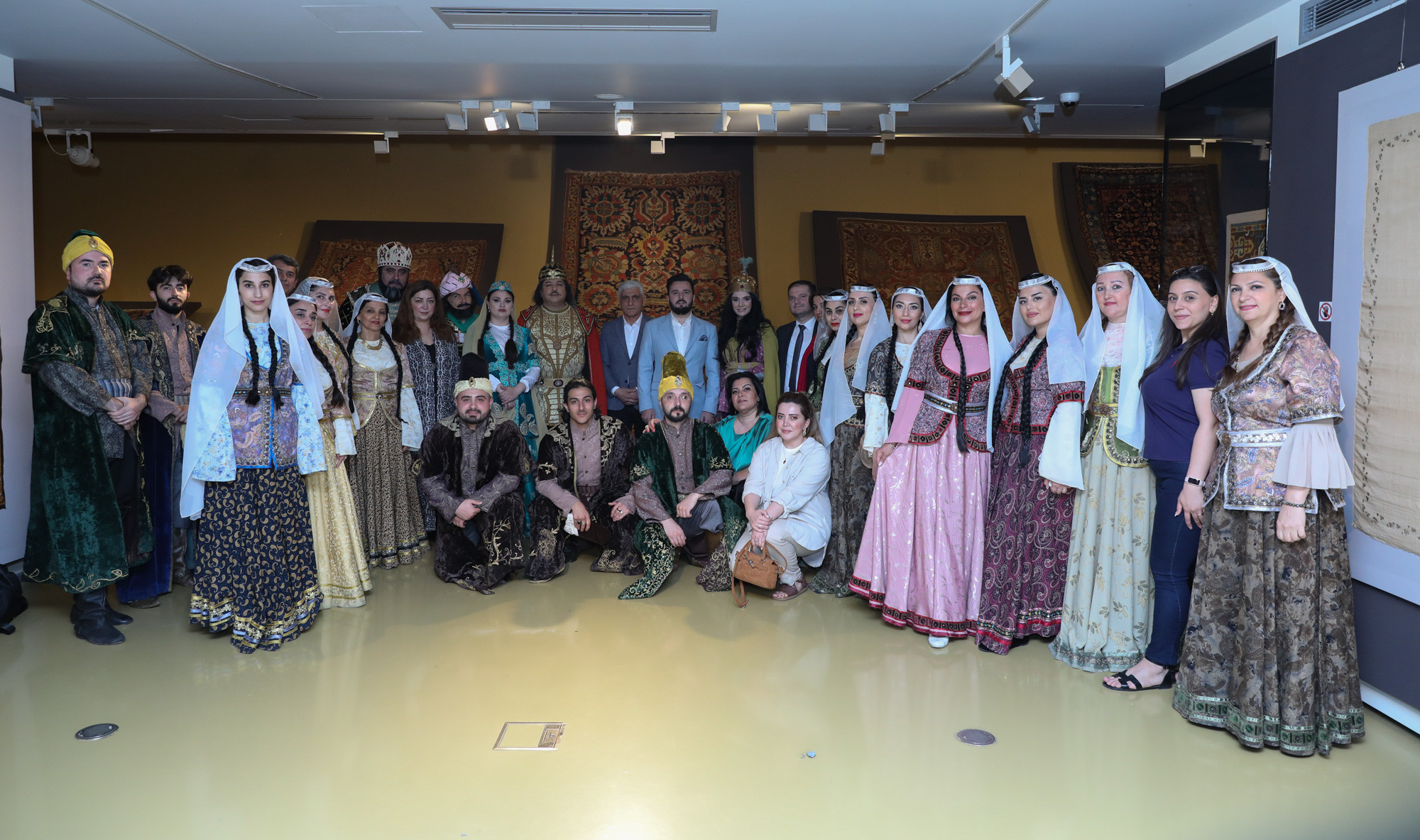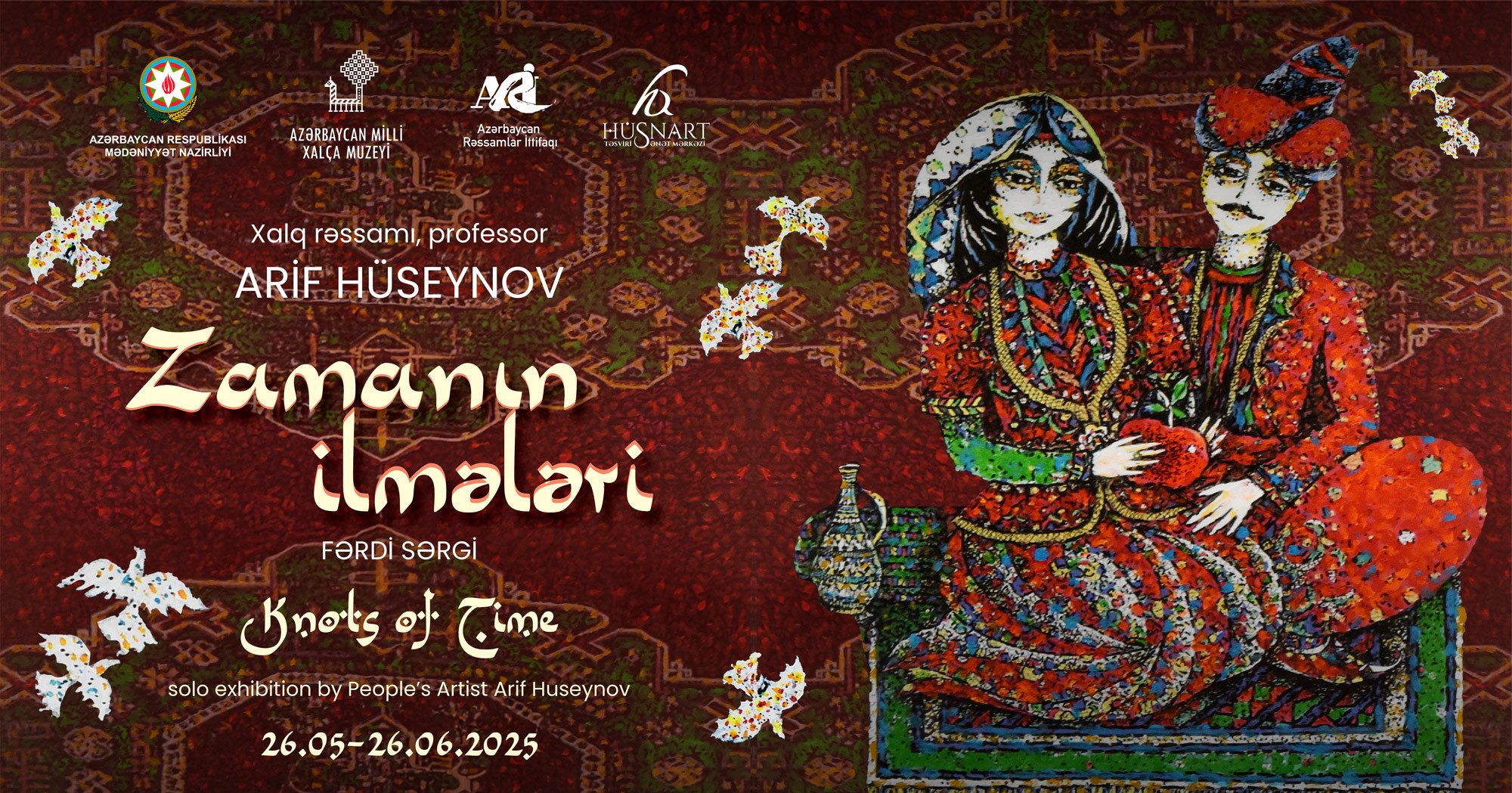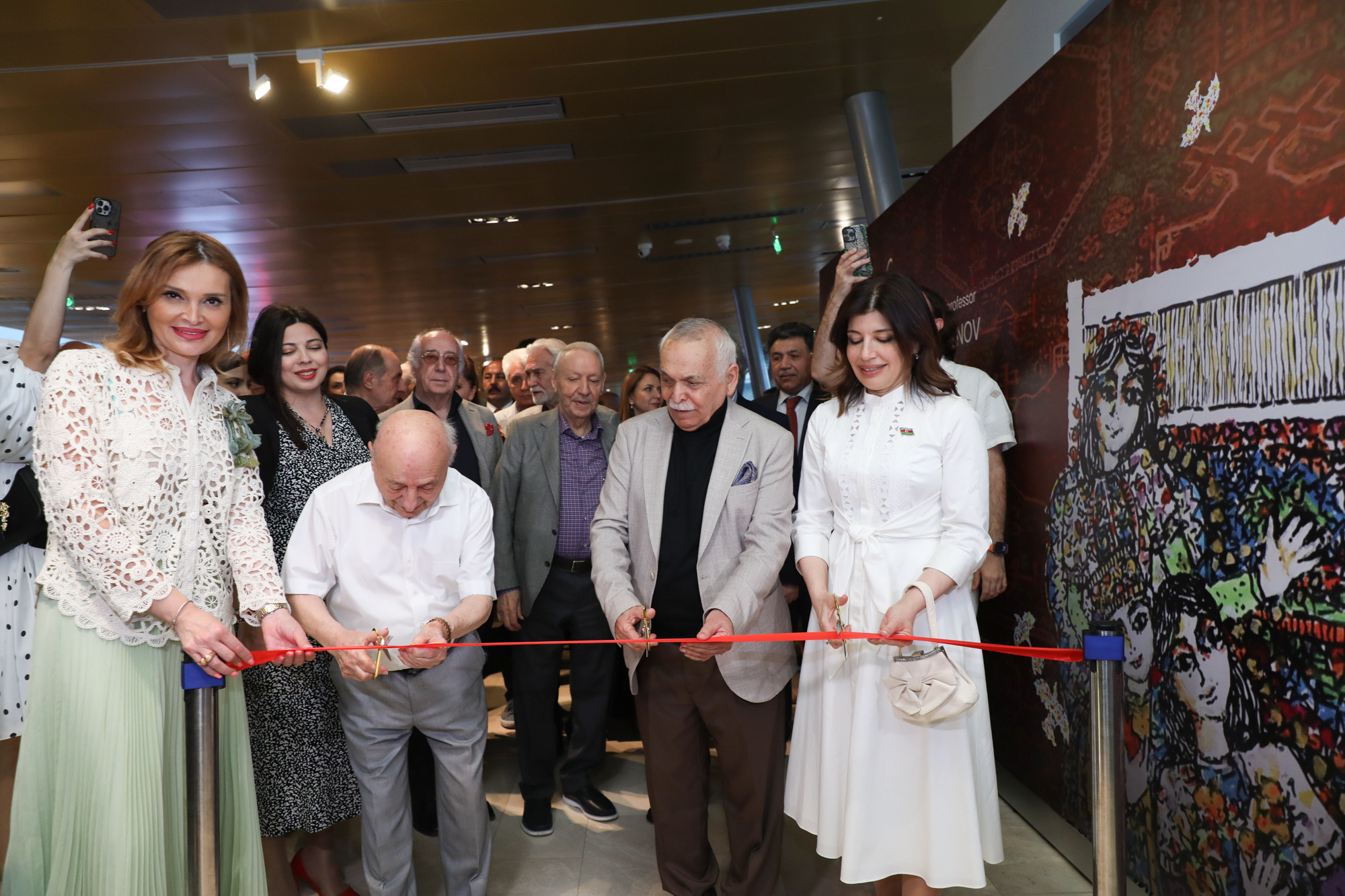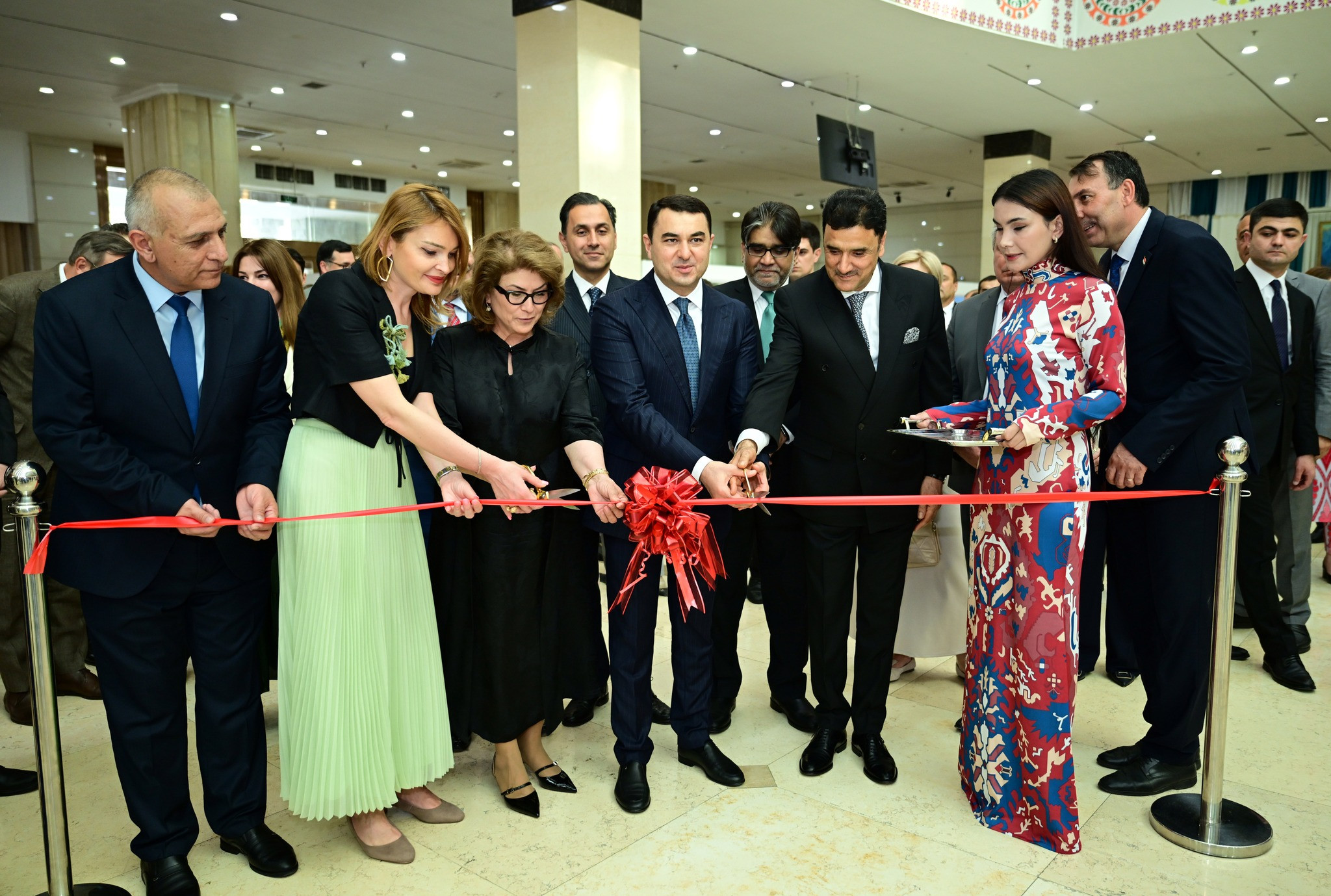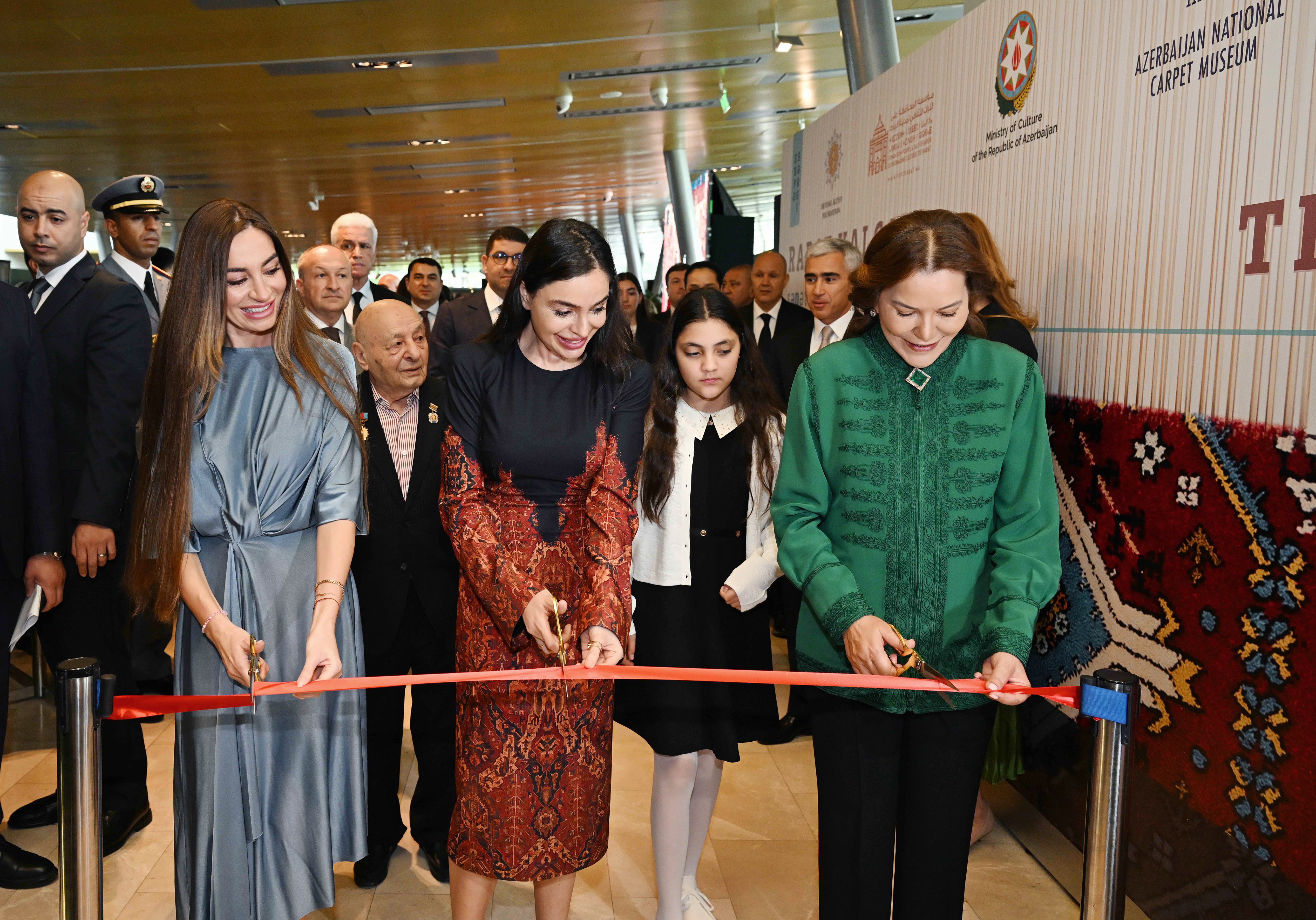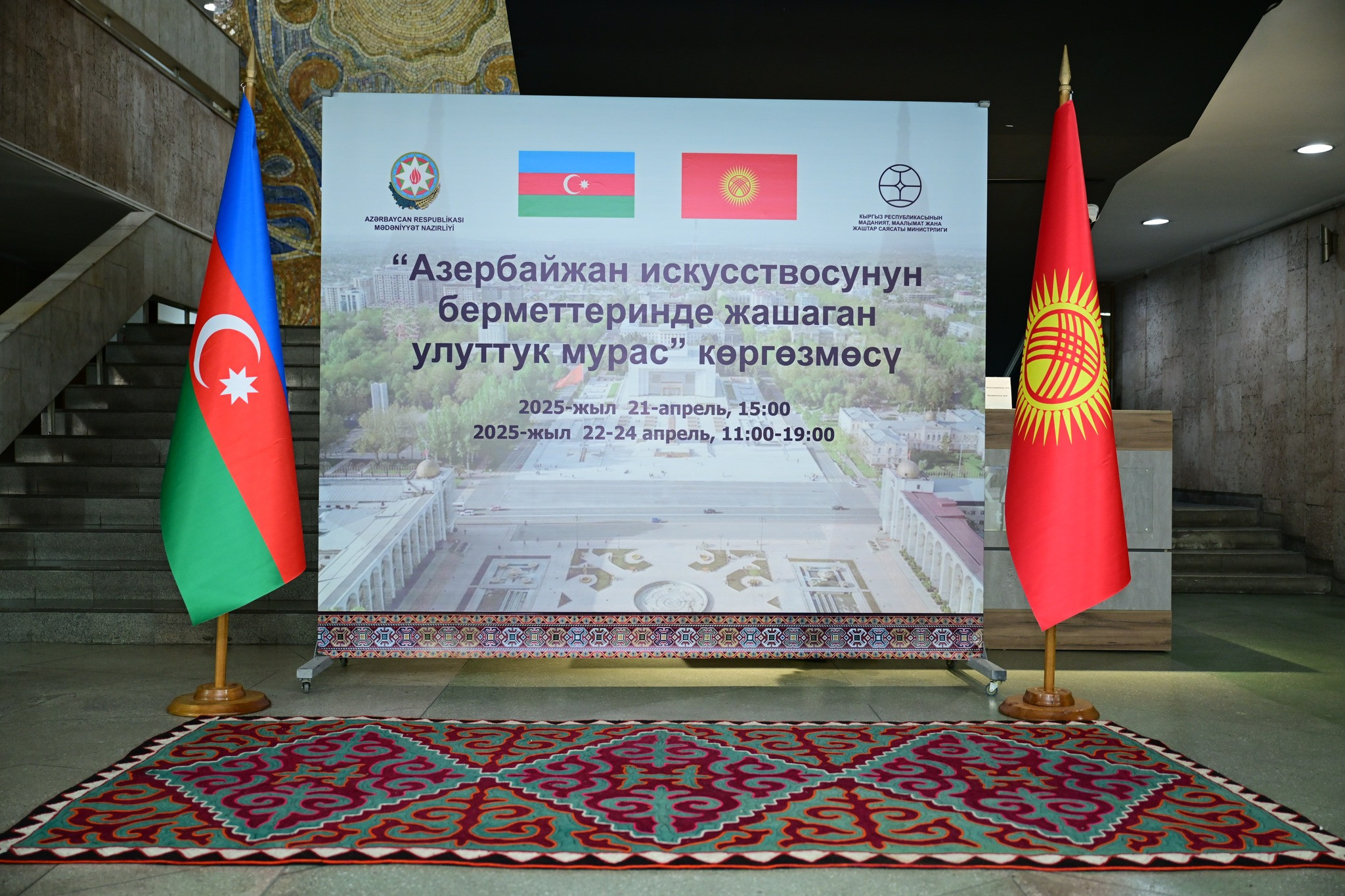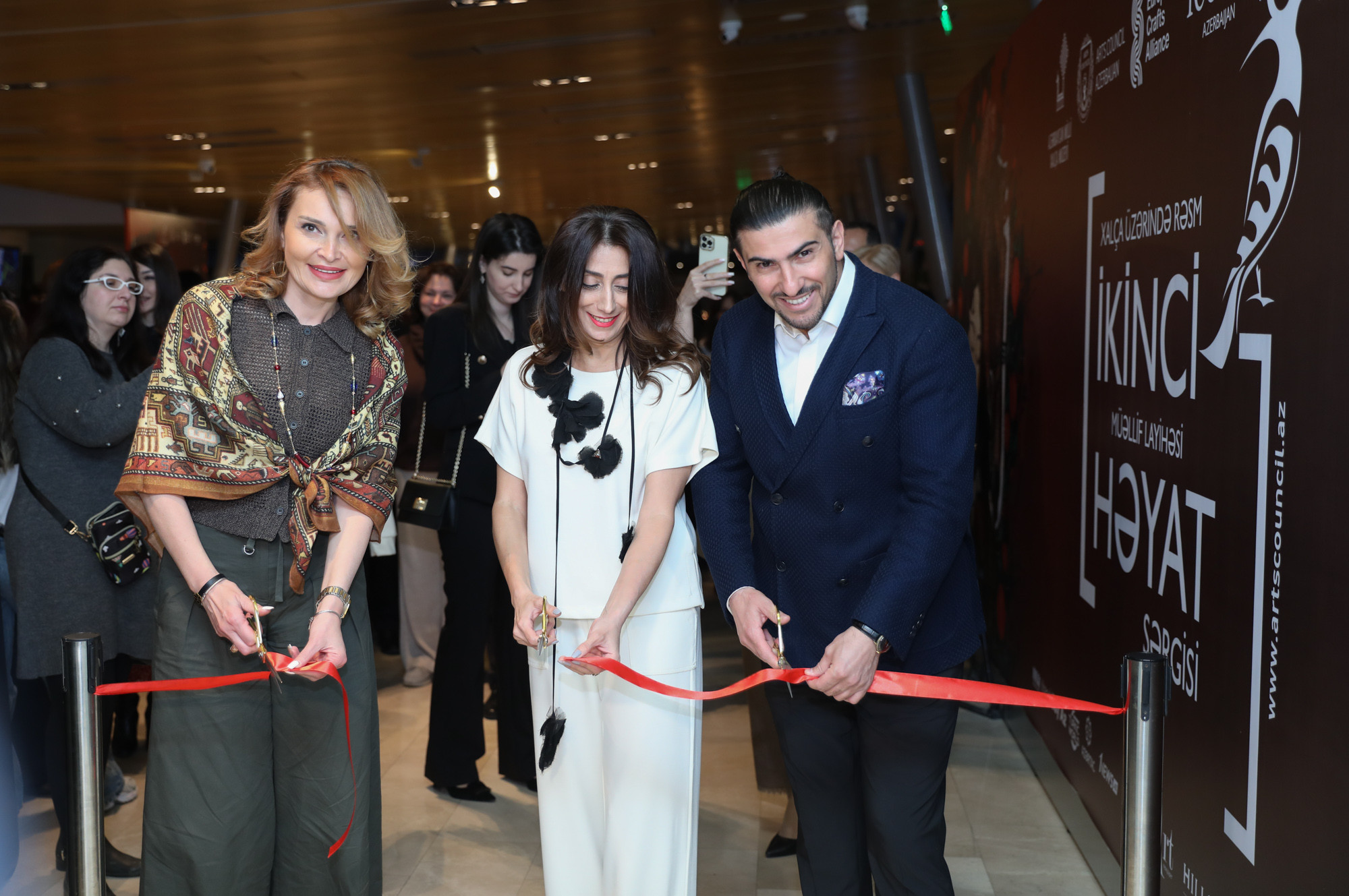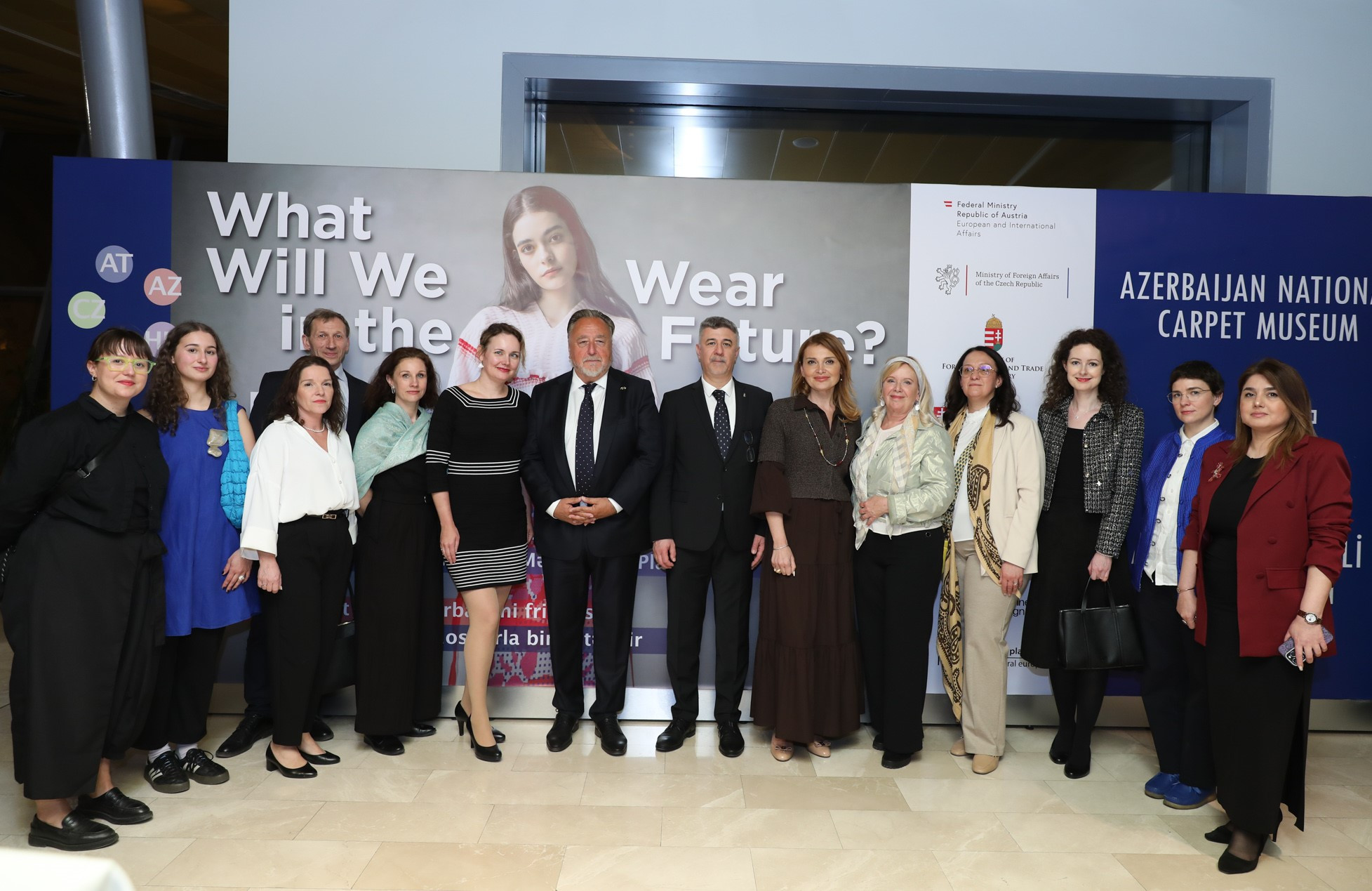Fabrics, Costumes, Embroidery
The “Fabrics, Costumes, Embroidery” collection features 1225 objects from the 19th and 20th centuries. The museum retains examples of traditional costumes from different regions of Azerbaijan, including chepken (type of jacket); arkhalig (another type of jacket for women or men); tuman (skirt); kurdu (a quilted and sleeveless upper garment); janlig (vest); chukha (men’s outerwear); yapinji (felt cloak); chakh-chur (silk pants for women); shalvar (trousers); charig (leather shoes); labbada (women’s jacket); kulaja (women’s knee-length outerwear without fasteners that is sewn from one piece of fabric above the waist and another below the waist): koynak (shirt); aragchin (skull-cap); ruband (veil for the face with openwork mesh for the eyes); kelaghai (silk scarf for women); and charshab (veil that women wore on the street) .
One of the most delicate and elegant crafts in Azerbaijan’s traditional material culture is embroidery. National costumes do not flourish without this art. The collection boasts a variety of embroidery patterns: takhcha gabaghi (curtain); sufra (tablecloth); darag gabi (comb case); tutun gabi (case for tobacco); iynadan (needle case); galamdan (case for pens); bigh baghi (mustache grooming case); heyba (medium-sized valise), mohur gabi (case for clay mohur, which takes the form of a flat circle and is extracted in the holy places – Kerbala, Mecca, Mashhad. People touch their foreheads with mohur while praying); pul kisesi (purse); yelpik (fan); namazlig (prayer rug); and Quran gabi (case for the Koran).
Various techniques were used in embroidery, such as takalduz (tambour embroidery); gulabatin (golden embroidery); pilak (embroidery with sparkles), munjug (embroidery with beads and sequins); qurama (patchwork); and julma (loop embroidery).
The collection’s oldest object is a fragment of textile, which was made in the 12th-13th century and was found during archaeological excavations in the area called Kharaba Gilan (Nakhchivan).
The collection also houses such fabrics as ganovuz (kanaus, dense silk cloth) and tirma, which was popular among ordinary Azerbaijanis. Through the fabrics’ patterns and colors, one can define the ethnic groups or social classes to which the wearers belonged.
